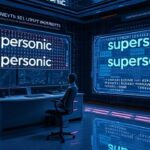In recent years, advancements in artificial intelligence have transformed creative workflows across industries, and one of the most remarkable breakthroughs is text-to-image AI technology. This innovation enables users to generate high-quality visuals simply by describing them in words, unlocking new possibilities for artists, designers, marketers, and educators.
How It Works
Text-to-image AI models use deep learning techniques, particularly large datasets of images paired with text descriptions, to learn visual concepts. By analyzing these relationships, the AI can generate entirely new visuals that align with written prompts. State-of-the-art models interpret details like objects, colors, scenes, and even abstract ideas, producing results in a matter of seconds.
For example, a user could input “a serene beach at sunset with soft orange skies,” and the AI would create an image matching this description. Such precision allows for unparalleled flexibility and accessibility in visual storytelling.
Applications Across Industries
- Art and Design: Artists use text-to-image tools to explore ideas, create concepts, or refine visions without the need for traditional artistic resources.
- Marketing and Branding: Businesses leverage the technology to quickly create visuals for campaigns, eliminating lengthy design turnaround times.
- Education: Educators can visualize complex concepts, helping students grasp abstract ideas through custom images.
- Entertainment and Media: Filmmakers, game developers, and writers can use the technology to prototype scenes or characters based on their creative briefs.
Ethics and Challenges
While the benefits are vast, text-to-image AI does raise questions around copyright, misuse, and creative ownership. Ethical guidelines and transparent practices are critical to ensuring the technology serves as a tool for innovation rather than exploitation.
A New Era of Creativity
Text-to-image AI represents a bridge between imagination and reality, empowering people to create what they envision. As technology continues to evolve, its integration into everyday workflows will reshape how we think about visual content and creative expression.
The rise of AI tools marks an exciting era where the boundary between ideas and visuals is no longer constrained by technical limitations. Creativity is now limited only by the imagination.







